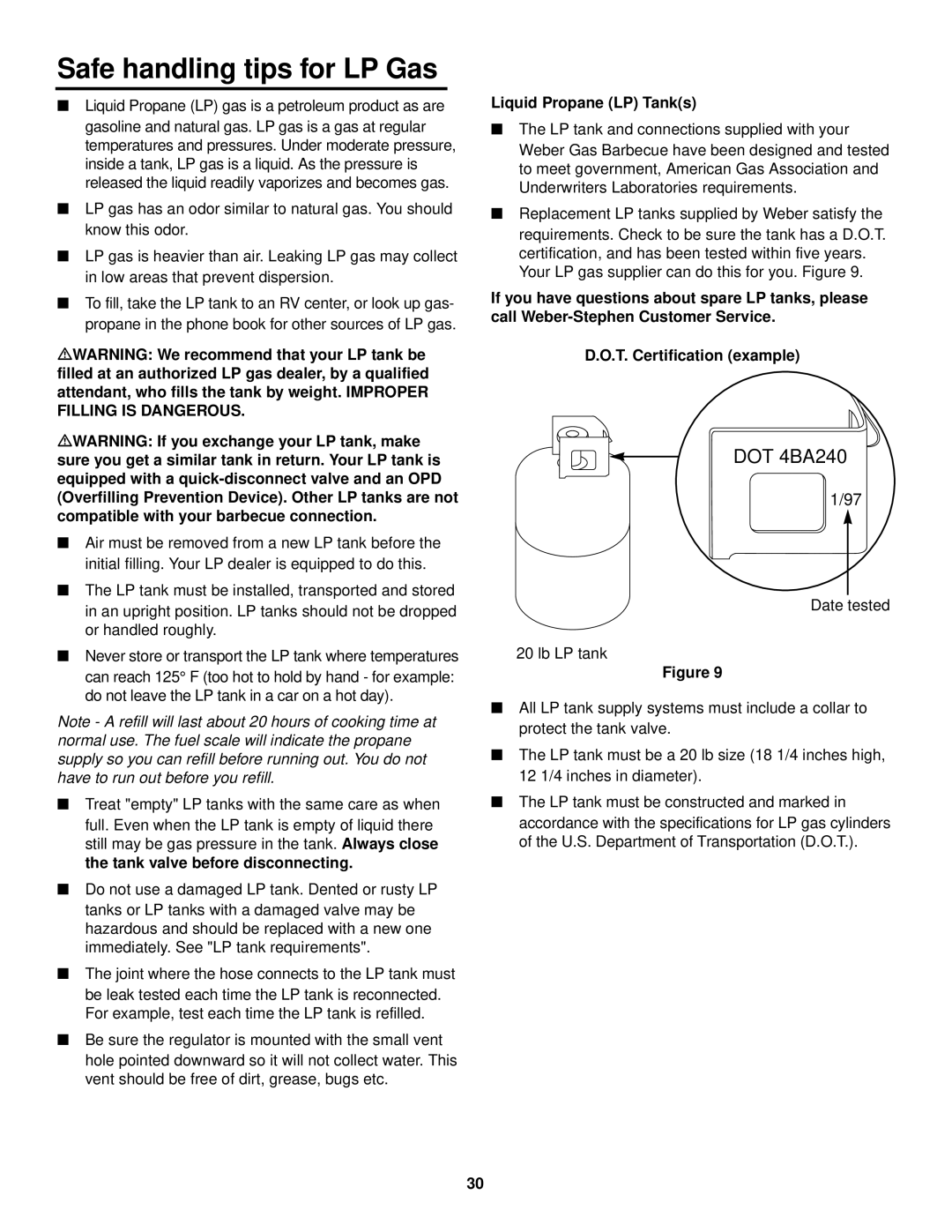3000 LX specifications
The Weber 3000 LX is a premier natural gas grill designed for outdoor cooking enthusiasts who demand both performance and versatility. This grill stands out with its sleek design, robust build, and an array of innovative features that make grilling a delightful experience.One of the main features of the Weber 3000 LX is its generous cooking area. With a primary grilling surface of 669 square inches, it allows you to cook for large gatherings with ease. The grill also includes a warming rack that adds an additional 198 square inches of space, ensuring that all your food remains warm while the other items finish cooking.
The 3000 LX is equipped with powerful burners that deliver a remarkable 60,000 BTUs of cooking power, providing consistent heat across the entire grilling surface. The grill features three stainless steel burners that offer a combination of performance and durability. The Infinity ignition system ensures the grill fires up reliably every time, eliminating the frustration of failed starts.
Weber’s unique Flavorizer bars are another highlight of this grill. These angled bars are designed to catch drippings that sizzle and smoke, infusing your food with rich, smoky flavors. This feature not only enhances the taste of your grilled items but also helps keep the burners cleaner by minimizing flare-ups.
The grilling experience on the Weber 3000 LX is further enhanced by its high-quality construction. The porcelain-enameled lid and cast-iron grates provide excellent heat retention and distribution, ensuring that your food is cooked evenly. Additionally, the grill includes an easy-to-read built-in thermometer, allowing you to monitor the internal temperature of your food without lifting the lid.
Another notable technology in the Weber 3000 LX is its modular grill system, which allows for customized cooking options. With interchangeable grilling tools and accessories, you can expand your culinary possibilities by incorporating pizza stones, griddle plates, and more.
For ease of use, the grill features foldable side tables that provide extra prep space when needed and can be tucked away when not in use. The grill is also equipped with a convenient storage cabinet, allowing you to keep your grilling tools organized.
Overall, the Weber 3000 LX combines innovative technology, thoughtful design, and superior performance, making it a top choice for any outdoor cooking enthusiast seeking to elevate their grilling experience. Whether you are an occasional griller or a seasoned pitmaster, this grill will exceed your expectations and make outdoor cooking enjoyable.

